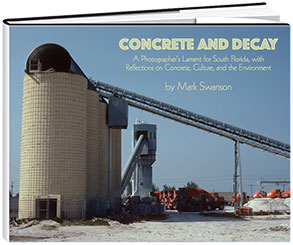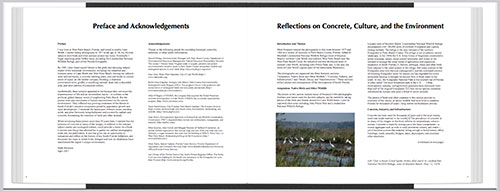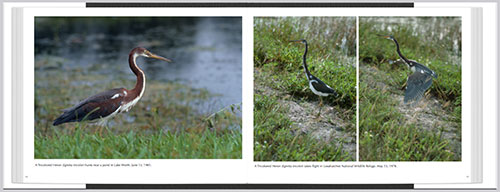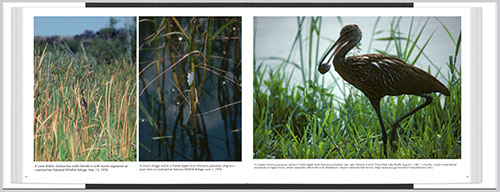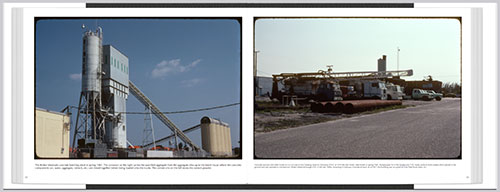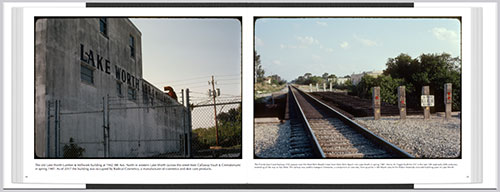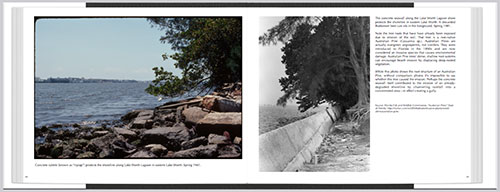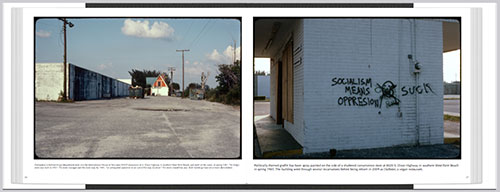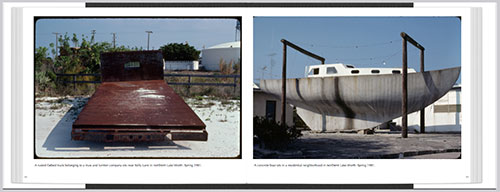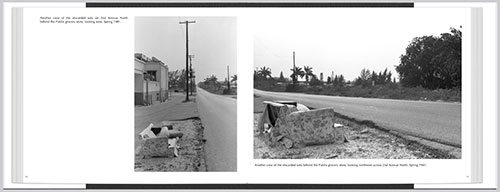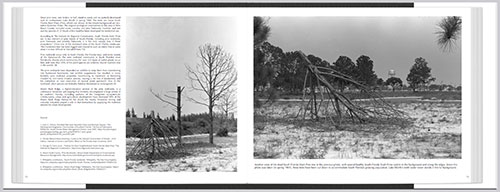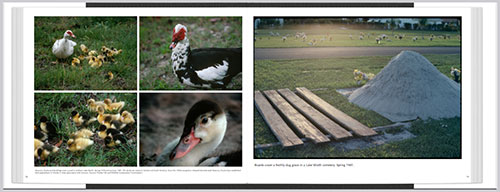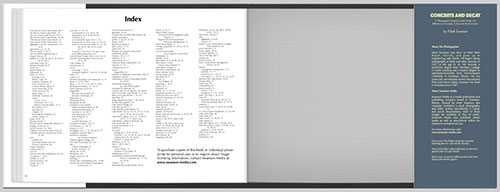Books
Concrete and Decay: A Photographer's Lament for South Florida, with Reflections on Concrete, Culture, and the Environment
by Mark Swanson
|
|
Book description Concrete and Decay: A Photographer's Lament for South Florida, with Reflections on Concrete, Culture, and the Environment is a collection of 90+ photographs created by Mark Swanson between 1977 and 1982 when he was a teenager living in Lake Worth, Florida. With subjects ranging from a Tricolored Heron to a concrete plant to a discarded sofa, the images explore the wildlife and changing landscape of South Florida. This is a book in which "natural history meets urban history." The book includes Swanson's new 1,200-word essay, "Reflections on Concrete, Culture, and the Environment," that explores the origins of Loxahatchee National Wildlife Refuge and the degradation of the Florida Everglades; concrete uses and concrete recycling; the environmental impact of concrete, cement manufacturing, and limestone mining near Miami; and cultural themes reflected in the book's images, including the business life cycle, graffiti, poaching, and transformation of the environment. In short, Concrete and Decay documents many of the industries, businesses and structures that enabled the South Florida population boom of the 20th century, and laments the region's impacted ecosystems. The photos, in both color and black and white, were taken at these Palm Beach County locations:
Includes photos of:
A nice gift for anyone interested in the natural history and culture of Palm Beach County (in particular Lake Worth and southern West Palm Beach in the 1970s and 1980s) and the impact of population growth on South Florida's ecological communities. |
Contents
|
||
|
"The photographs are organized into three thematic sections: 'Adaptation: Native Birds and Other Wildlife;' 'Concrete, Industry, and Infrastructure;' and 'Death, Decay, and Transformation.' These sections reflect phases and consequences of the development of South Florida." "The prevalence of concrete in so many of the images in this book reflects its extraordinary value to society. . . . [But] the manufacture and use of concrete have environmental consequences. The cement industry is a major emitter of carbon dioxide, a greenhouse gas that contributes to global warming. Concrete’s hard surfaces contribute to surface runoff, which can cause heavy soil erosion and water pollution. On the other hand, concrete walls can control flooding and protect shorelines—paradoxically, from the rising waters cement production helped cause." "[Images of non-native lizards and a shuttered building since turned into a vegan restaurant] represent both negative and positive examples of transformation due to human activity . . ." "A Limpkin (Aramus guarauna) carries a Florida Apple Snail (Pomacea paludosa) near Lake Osborne in John Prince Park, Lake Worth. August 4, 1981. In Florida, Limpkins feed almost exclusively on Apple Snails, whose availability affects the bird’s distribution." "The Rinker Materials concrete batching plant in spring 1981. The conveyor on the right carries the specified aggregate from the aggregate silos up to the batch house where the concrete components (air, water, aggregate, cement, etc.) are mixed together before being loaded onto the trucks. The cement silo on the left stores the cement powder." [Left] "Dumpsters sit behind King’s department store and the International House of Pancakes (IHOP) restaurant on S. Dixie Highway in southern West Palm Beach, just north of the canal, in spring 1981. The King’s store was built in 1957. The store manager said the store was, by 1981, “an antiquated operation in an out-of-the-way location.” The store closed that year. Both buildings have since been demolished." [Right] "Politically-themed graffiti has been spray-painted on the side of a shuttered convenience store at 8020 S. Dixie Highway in southern West Palm Beach in spring 1981. The building went through several incarnations before being reborn in 2009 as Darbster, a vegan restaurant." "Another view of the discarded sofa behind the Publix grocery store, looking northwest across 2nd Avenue North [in Lake Worth]. Spring 1981." "Dead pine trees . . . stand in sandy soil on partially-developed land in northwestern Lake Worth in spring 1981. The trees are native South Florida Slash Pines (Pinus elliottii var. densa). . . . The original ecological communities in this area of Palm Beach County included scrub, scrubby and pine flatwoods, marshes, and wet and dry prairies. Much of this land has been developed for residential use." |
||||
